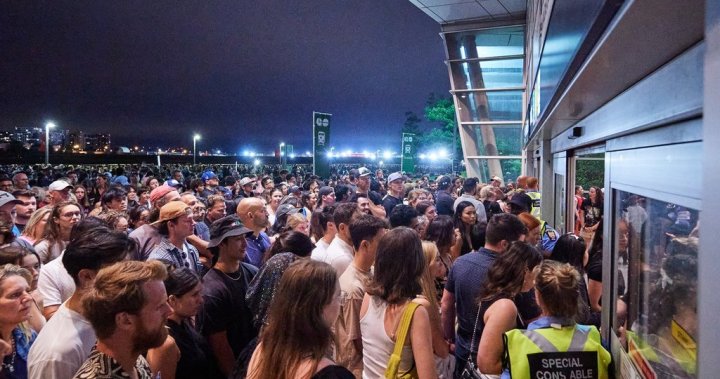The brand-new Rogers Stadium in Toronto was envisioned as a premier venue, drawing top-tier talent and bolstering the city’s entertainment scene. However, recent events have cast a shadow on this vision. Coldplay’s Chris Martin’s on-stage remarks criticizing the stadium, coupled with initial complaints about logistical challenges, have sparked concerns among marketing experts. This article delves into the potential branding repercussions for Rogers, the stadium’s sponsor, and explores the broader implications for venue sponsorships. Understanding the intricate link between fan experience and brand perception is crucial in today’s sponsorship landscape.
The Chris Martin Effect: A Marketing Expert’s Perspective
Markus Giesler, a marketing professor at York University’s Schulich School of Business, expressed significant concern over Chris Martin’s comments about Rogers Stadium. Martin’s description of the venue as a ‘weird stadium in the middle of nowhere’ struck a nerve, particularly given the efforts to position Rogers Stadium as a top destination for major acts. Giesler emphasized that such negative associations are ‘branding poison’ for Rogers, undermining the company’s investment in the venue.
The impact of such comments extends beyond a single concert. It influences public perception and can affect how potential customers view the Rogers brand. The challenge for Rogers is to mitigate this damage and reinforce positive associations with the stadium through improved experiences and strategic marketing efforts.
‘It sent shivers down my spine,’ Giesler said of Martin’s comments at the 50,000-capacity venue built to attract big acts to the city over the next five years.
The Risk of Naming Rights: A Double-Edged Sword
Experts point out that attaching a brand name to a venue comes with inherent risks, especially when the sponsor doesn’t own or control its operations. Rogers’ situation exemplifies this challenge. Despite having its name on the stadium, Rogers relies on Live Nation to manage the venue and ensure a positive fan experience. When things go wrong, the brand associated with the stadium bears the brunt of the negative publicity.
Zac Carreiro, a Rogers spokesman, acknowledged the operational improvements being implemented by Live Nation to address the initial issues. These adjustments aim to improve crowd flow, ease traffic congestion, and enhance accessibility. The success of these efforts will be crucial in shaping public perception of the venue and, by extension, the Rogers brand.
Early Impressions and Reputational Shadows
Despite efforts to improve the stadium, early negative impressions can linger and potentially damage Rogers’ reputation. Giesler noted that the brand’s name shines brightly when the venue is in the spotlight, both positively and negatively. The fan experience directly translates into how people feel about the brand. A positive experience strengthens brand loyalty, while a negative one can drive customers away.
The association with Taylor Swift’s successful concerts last year boosted Rogers’ image, demonstrating the potential upside of venue sponsorships. However, the current challenges at Rogers Stadium highlight the importance of consistent quality control and proactive management of the fan experience to protect the brand’s reputation.
‘When the spotlight is on the venue, the brand’s name shines just as brightly, both in a good and in a bad way. And that has to do with the fact that the fan experience, in some sense, almost directly translates to how we think and how we feel about a brand,’ he said.
The Location Factor: A Bizarre Stadium a Million Miles from Earth?
One of the persistent criticisms of Rogers Stadium is its location on the outskirts of Toronto. Coldplay’s Chris Martin humorously referred to it as a ‘very bizarre stadium a million miles from Earth,’ highlighting the inconvenience for concertgoers. The distance from downtown and the reliance on public transportation add to the logistical challenges faced by attendees.
Brian Ellis, a concertgoer from Detroit, mistakenly booked accommodations near the Rogers Centre, assuming it was close to the new stadium. His experience underscores the confusion and frustration caused by the stadium’s location. Addressing these accessibility issues is vital to improving the overall fan experience and mitigating negative perceptions.
Temporary Solution, Long-Term Vision
Rogers Stadium is a temporary venue located near the former Downsview Airport, earmarked for a large-scale development project. This temporary nature influences the incentive to invest in significant customer experience improvements, according to Timothy Dewhirst, a marketing professor at the University of Guelph. The limited competition in Toronto’s concert market may also contribute to complacency.
Despite these challenges, Rogers Stadium fills a crucial gap in Toronto’s entertainment landscape by providing a dedicated concert venue that doesn’t compete with sporting events. However, music lovers seeking alternatives to the Downsview location may need to travel to other cities like Montreal or Detroit to see major acts.
Conclusion: Navigating the Sponsorship Minefield
The situation at Rogers Stadium underscores the complexities of venue sponsorships and the importance of managing brand associations. While attaching a brand name to a venue can offer significant benefits, it also exposes the brand to potential risks when things go wrong. Rogers’ experience serves as a cautionary tale, highlighting the need for proactive management of the fan experience and strategic marketing efforts to mitigate negative publicity.
Ultimately, the success of Rogers’ investment in the stadium hinges on its ability to address logistical challenges, improve the overall fan experience, and reinforce positive associations with the Rogers brand. The lessons learned from this situation can inform future sponsorship decisions and strategies, ensuring that brands are well-positioned to reap the rewards of venue partnerships while minimizing the risks.

Leave a Reply